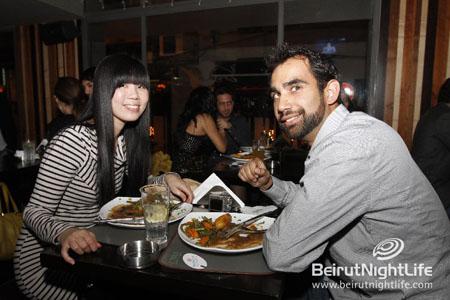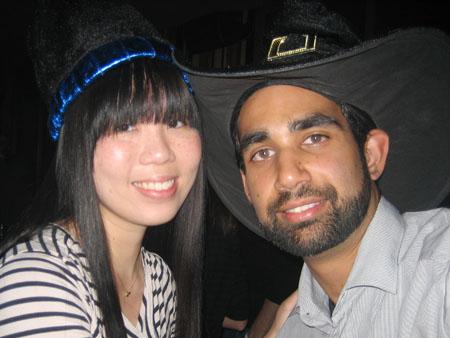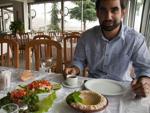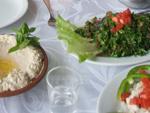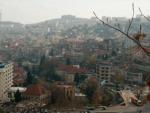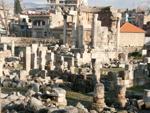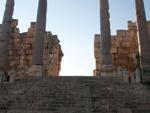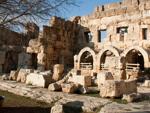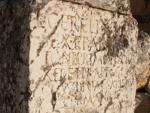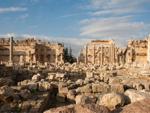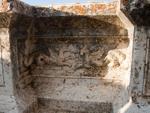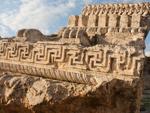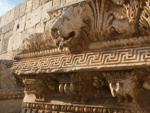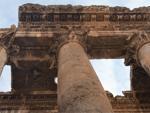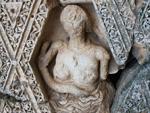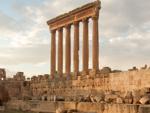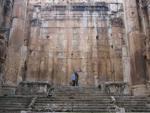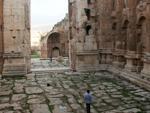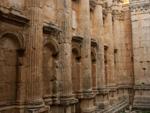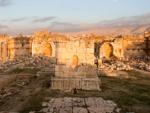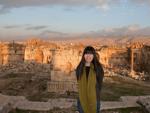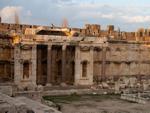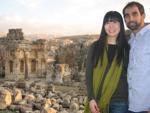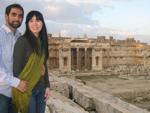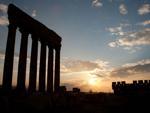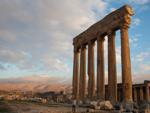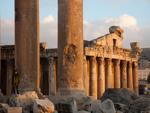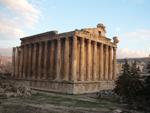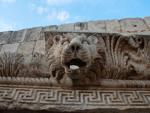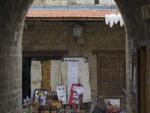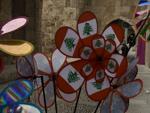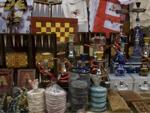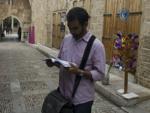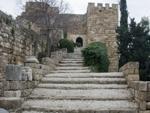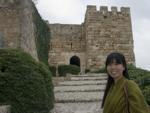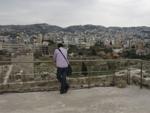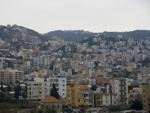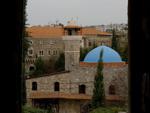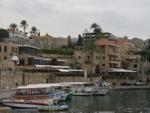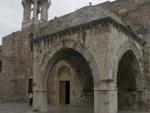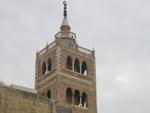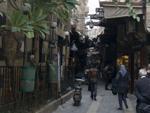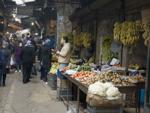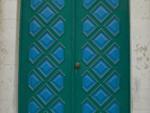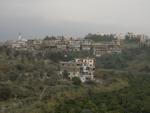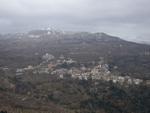Having heard that Beirut was the destination of choice for many Middle Easterners, we were curious to explore this part of the ME over the festive season.
The flight from Doha was about two and a half to three hours. We flew Qatar Airways but as I was asleep for most of the trip was unable to enjoy ‘the world’s first five star airlines’. By the time we landed at Beirut airport it was 3am. After dropping our car rental representative at his home (it’s a long story), we headed towards the Hamra area to our hotel.
We were low on fuel, the streets were empty except for armed guards and the occasional tank sprinkled on each street corner. Needless to say we were both a little nervous at first, not really knowing what to expect. Eventually, we found the hotel and managed to get a few hours rest before waking up to a sunny Winters day.
It was decided that the first day would be spent exploring Beirut city. We had arranged for a tour in the afternoon so had a few hours in the morning to spare. First stop was the ATM to withdraw some Lebanese Pounds (or Lira as it is commonly known). I laughed as I saw Travis enter 300,000.00 into the withdrawal box – 1USD is equivalent to 1500LP (pegged currency to the USD).
Next was a stroll along Rue Bliss which runs along the campus of the American University of Beirut. We stopped for a lamb shwarma and coffee at a popular student cafe, which we enjoyed on the grounds of the scenic University.
On our way to the Corniche (Arabic for riverside road) to view Pigeon Rocks (natural rock formations on the edge of the Mediterranean sea) it was hard not to notice the beautiful architecture of the flats along the way with their French, Turkish and Lebanese influences. Oriental rugs were strewn across balconies. Christmas trees and decorations were also plentiful, as Lebanon’s population is about fifty percent Christian.
There were also worn down buildings, grey and dreary that looked like they had not been cared for or even occupied since the civil war started in 1975.
Pigeon Rocks was, scenic, but we opted to give the boat ride around the rock formations a miss, despite being asked by about five different boat vendors.
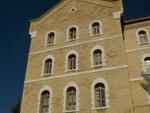
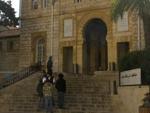
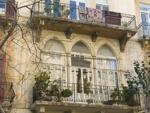
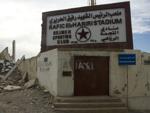
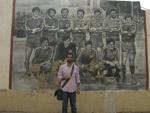
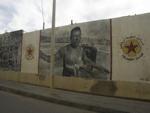
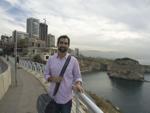
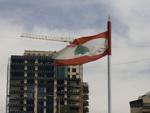
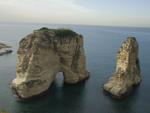
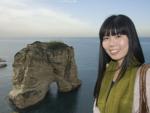
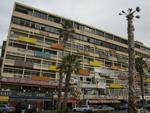
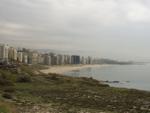
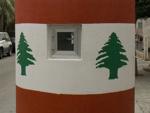
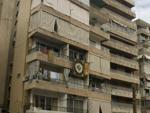
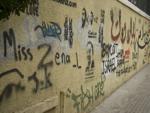
thydzikgooglemap(http://sonyaandtravis.com/maps/beirut-day-1-pigeon-rocks.xml)
By this time we had spent close to four hours wandering the streets of Ras Beirut. The afternoon ahead was a walking tour of Beirut (‘Walk Beirut’) which was another five hours of walking!
We headed back to the hotel for a short rest before meeting with our tour guide and group outside a giant Banyan tree at the American University of Beirut.
Travis found the tour online via Lonely Planet and we could see from the turnout that it was extremely popular. There were about 50 other people hoping to also ‘Walk Beirut‘, Brits, French, Americans – accents from everywhere, all huddled around the tree. The tour commenced in Hamra and included key sites across West Beirut, Downtown Beirut and East Beirut. It was definitely the most fascinating tour I’ve ever been on as it was designed to show travellers parts of the city one wouldn’t necessary notice or find in a travel guide.
Highlights included:
- Visiting the infamous Holiday Inn. Built in the early 70’s it was (and still is) the biggest building in the city – but now it stands an empty building shell with a bullet ridden exterior. Just looking at it gave me goosebumps..
- Walking along outside the half refurbished synagogue in the deserted Jewish precinct and learning about Liza, the thought-to-be ‘last’ Jewish lady in Beirut.
- Learning about the stories of the peoples revolts at Martyr’s Square.
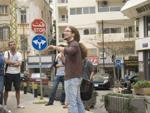
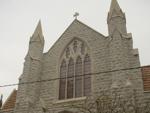

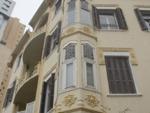
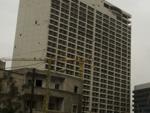
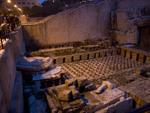
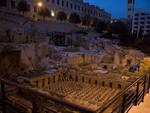
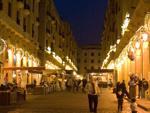
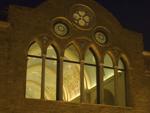
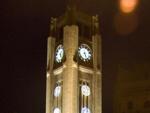
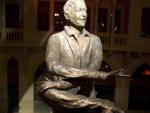
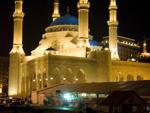
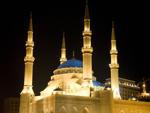
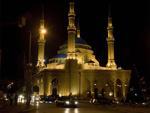
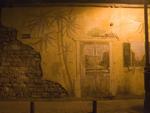
thydzikgooglemap(http://sonyaandtravis.com/maps/beirut-day-1-walk-beirut.xml)
Ronnie, the tour guide, was a wonderful storyteller – both interesting and insightful with an incredibly deep understanding of the historical and political context of the city. The team also did a great job of getting a group of 50 people to cross the busy streets of Beirut without any issues.
After the tour, Travis and I headed to the Gemmayze district – apparently one of the upcoming, trendy areas of East Beirut. We went to a cosy Italian restaurant where were shared an antipasto platter and mozzarella, salami and basil pizza. As we left the restaurant we noticed heaps of young Beirutis along the street, dressed to the nines – ready to party the Wednesday night away.
On the way back to Hamra we stopped by the new Beirut souks – basically an outdoor shopping mall with familiar brands. By the time we reached Hamra and our hotel, it was close to midnight and we were both exhausted.
Walk Beirut Map
Details of the Winter 2010 – 2011 Walk Beirut,
- Hamra
- Banque du Liban
- Trad Hospital
- Kantari Traditional Quarter
- Holiday Inn
- Trade Tower
- Wadi Abu Jmeel
- Magen Avraham Synagogue
- Roman Baths
- Grand Serail
- Place de L’Etoile
- Saint Georges Cathedral
- Grand Omari Mosque
- Samir Kassir Garden
- Martyr’s Square
- Hariri Memorial
- Al Amin Mosque
- The Dome/Egg
- Bachoura & Khandaq al Ghamiq
- Monot
thydzikgooglemap(http://sonyaandtravis.com/maps/walk-beirut-winter-2010-2011-map.xml)




































































































